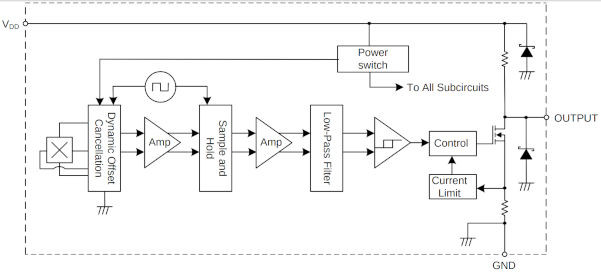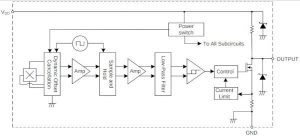
The single output is switched ‘on’ with a magnetic pole above a certain flux density, and then switched ‘off’ when exposed to the opposite pole of the same flux density magnitude.
There are three parts:
- AH3712: south pole ‘on’, north pole ‘off’, open drain output
- AH3712A: south pole ‘on’, north pole ‘off’, internal 14kΩ output pull-up
- AH3712B (planned): south pole ‘off, north pole ‘on’, open drain output
The trip thresholds are ±25G, while similar ICs in the family offer ±30G (AH3713), ±40G (AH3714), ±70G (AH3715), ±110G (AH3716) or ±140G (AH3717). The last three do not have ‘A’ or ‘B’ variants.
Operation is from 3.0 to 27V (2.8mA), with load-dump protection up to 40V. The AH3712 version (no suffix) can also survive -18V on its power terminal, according to the data sheet – this might also be true of the ‘B’ version, the data sheet has it both ways.
Internally, the device is chopper-stabilised and has an internal bandgap regulator to reduce temperature-dependence – operation is over -40 to +125°C.
Use is foreseen commutating brush-less dc motors and in flow meters, linear encoders and position sensors, in industrial as well as automotive applications.
Find the AH3712 data sheet here







